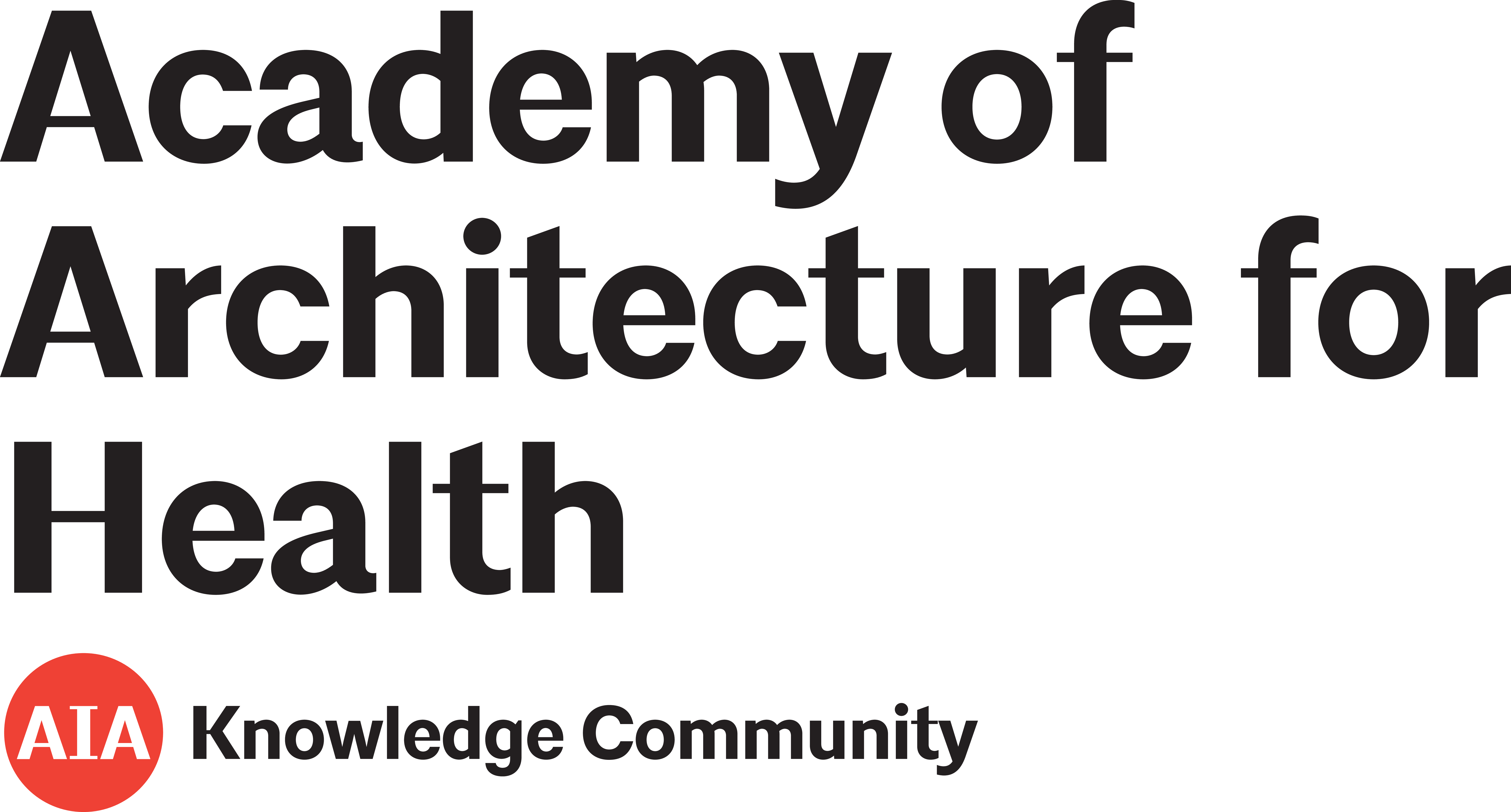Developing and constructing the physical and safety environment of an inpatient psychiatric hospitalization unit
2024
Handbook of Evidence-Based Inpatient Mental Health Programs for Children and Adolescents
Book Section
Author(s): Leffler, J. M., Thompson, A. D., Simmons, S. W., Roberts, L. G., Moran, J. M., Caufield, S.
Added September 2024
Measuring the overall development of patient safety in a new hospital using trigger tools
2024
International Journal for Quality in Health Care
Journal Article
Author(s): Adamovic, I., Dahlem, P., Brachmann, J.
Added July 2024
Applying Human Factors and Systems Simulation Methods to Inform a Multimillion-Dollar Healthcare Decision
2024
HERD: Health Environments Research & Design Journal
Journal Article
Author(s): Dubé, M., Martel, J., Kumagai, J., Suddes, M., Cullen, J., Laberge, J.
The integration of human factors (HF) and systems-focused simulation (SFS) to inform design decisions is an underutilized strategy. Specifically, using simulation with a human factors lens can help teams assess the implications of design decisions in a safe and low-risk environment.
Added March 2024
Exploring environmental design attributes impacting staff perceptions of safety in a complex hospital system: Implications for healthcare design
2023
Journal of Hospital Management and Health Policy
Journal Article
Issue 7
Volume 2023
Pages 21
Author(s): Zamani, Z., Joy, T., Abbey, M.
Added January 2024
The impact of sensory stimuli on healthcare workers and outcomes in trauma rooms: A focus group study
2024
HERD: Health Environments Research & Design Journal
Journal Article
Issue 2
Volume 17
Pages 115-128
Author(s): Bayramzadeh, S., Ahmadpour, S.
Research demonstrates that excessive sensory stimuli in healthcare settings can negatively impact patient, staff, and organizational outcomes. Because emergency department (ED) trauma areas can be especially chaotic, understanding issues related to noise, lighting, and temperature is the first step toward addressing the problem.
Added December 2023
A systematic review of ventilation solutions for hospital wards: Addressing cross-infection and patient safety
2024
Building and Environment
Journal Article
Author(s): Nourozi, B., Wierzbicka, A., Yao, R., Sadrizadeh, S.
Added November 2023
Chapter 14 - Redesigning the operating room for safety
2024
Handbook of Perioperative and Procedural Patient Safety
Book Section
Author(s): Fassbinder, M., Abernathy, J. H., Sanchez, J. A., Higgins, R. S. D., Kent, P. S.
Added October 2023
Identifying built environment risk factors to provider workflow and patient safety using simulation-based evaluation of a pediatric ICU room
2024
HERD: Health Environments Research & Design Journal
Journal Article
Issue 1
Volume 17
Pages 92-111
Author(s): Mihandoust, S., Joseph, A., Colman, N.
Added October 2023
Safety in health care: The impact of operating room design
2023
Anesthesiology Clinics
Journal Article
Issue 4
Volume 41
Pages 789-801
Author(s): Heinke, T. L., Joseph, A., Carroll, D.
Added September 2023
How visibility may reduce security issues in community hospitals’ emergency departments
2024
HERD: Health Environments Research & Design Journal
Journal Article
Issue 1
Volume 17
Pages 135-147
Author(s): Gharaveis, A., Hamilton, D. K., Pati, D., Shepley, M. M., Rodiek, S., McCall, D.
Research shows that many environmental factors have been employed to improve emergency department (ED) safety. Visibility as a design factor, an operational factor, and a layout characteristic can be leveraged to improve both safety and care efficiency.
Added August 2023
Analyzing design and planning trends in medical research laboratories and workplace environments: A benchmarking study
2023
Journal of Design for Resilience in Architecture and Planning
Journal Article
Issue 1
Volume 4
Pages 105-121
Author(s): Zamani, Z.
Research laboratory layouts can affect numerous variables such as workflow, safety, functionality outcomes, and traffic patterns. This study suggests that since 2009, there has been a lack of benchmarking comparisons made between the workspace metrics and physical attributes of different medical research buildings.
Added August 2023
Clinical, Humanistic and Economic Outcomes, Including Experiencing of Patient Safety Events, Associated with Admitting Patients to Single Rooms Compared with Shared Accommodation for Acute Hospital Admissions: A Systematic Review and Narrative Synthesis
2023
BMJ Open
Journal Article
Issue 5
Volume 13
Pages e068932
Author(s): Bertuzzi, A., Martin, A., Clarke, N., Springate, C., Ashton, R., Smith, W., Orlowski, A., McPherson, D.
Added August 2023
Sound Levels and Its Effect on Physiology of Low Birth Weight Newborns in a Special Care Newborn Unit — a Prospective Observational Study
2023
Egyptian Pediatric Association Gazette
Journal Article
Issue 1
Volume 71
Pages 30
Author(s): Das, S., Chakraborty, P., Bora, R., Chakraborty, P.
Special care newborn units (SCNUs), also known as neonatal intensive care units (NICUs), are technology-driven environments that can create stressful sonic environments for neonates. Exposure to noise levels above the 45 dB threshold recommended by the American Academy of Pediatrics may result in a variety of adverse health effects among developing neonates.
Added July 2023
The impact of physical environments on outpatient mental health recovery: A design-oriented qualitative study of patient perspectives
2023
PLOS ONE
Journal Article
Issue 4
Volume 18
Pages e0283962
Author(s): Sui, T. Y., McDermott, S., Harris, B., Hsin, h.
Patient-centered (or human-centered) design approaches have helped designers to better understand patient needs and expectations during mental health treatment. Previous studies show evidence that the physical environment has an impact on the human experience, and the importance of environments that support feelings all humans strive for, including normalcy, safety, control, and belonging.
Added May 2023
Assembling atmospheres, encountering care: Risk, affect, and safety in the cystic fibrosis clinic
2022
Wellbeing, Space and Society
Journal Article
Author(s): Martin, D., Buse, C., Brown, N., Nettleton, S., Lewis, A., Chapman, L.
Added April 2023
On the restorative break: Understanding the role of break room design on nurse engagement and satisfaction
2023
Workplace Health & Safety
Journal Article
Issue 7
Volume 71
Pages 329-336
Author(s): Lorusso, L., Ossmann, M., Orozco, T., Lawson, L.
Research demonstrates that breaks are important in mitigating the physical, cognitive, and emotional demands of nursing work. It is important that nursing unit break areas are not only accessible but also restorative.
Added April 2023
Heatwaves, hospitals and health system resilience in England: A qualitative assessment of frontline perspectives from the hot summer of 2019
2023
BMJ Open
Journal Article
Issue 3
Volume 13
Pages e068298
Author(s): Brooks, K., Landeg, O., Kovats, S., Sewell, M., OConnell, E.
This study gathers data from across England, where the intensity, duration, and frequency of heatwaves are gradually increasing due to climate change. England’s healthcare infrastructure is generally unsuited for excessive heat, as most facilities are not equipped with air conditioning; roughly 90% of English hospitals are vulnerable to overheating.
Added April 2023
A qualitative study of hospital interior environments during the COVID-19 pandemic
2023
International Journal of Environmental Research and Public Health
Journal Article
Issue 4
Volume 20
Pages 3271
Author(s): Bae, S.
There is a substantial body of research on the relationship between the physical environment and human health, and more recently, a growing understanding around how the healthcare environment impacts users, such as healthcare personnel.
Added February 2023
Coping and caregiving: Leveraging environmental design to moderate stress among healthcare workers in the emergency department setting
2023
HERD: Health Environments Research & Design Journal
Journal Article
Issue 3
Volume 16
Pages 261-277
Author(s): Bosch, S. J., Valipoor, S., Alakshendra, A., De Portu, G., Mohammadigorji, S., Rittenbacher, D., Black, K., Calienes, E.
Research demonstrates that healthcare work is demanding and emergency departments (EDs) are known to be particularly stressful. There is a lack of information about relationships between the built environment and the behaviors clinicians use to cope with work-related stress.
Added February 2023
Effects of the physical environment on children and families in hospital-based emergency departments: A systematic literature review
2023
Journal of Environmental Psychology
Journal Article
Author(s): Gripko, M., Joseph, A., MohammadiGorji, S.
The emergency department (ED) environment is often a very stressful place, especially for young children and their families. Previous studies show that highly stimulating environments may increase anxiety. There are many complex relationships among the physical environment and healthcare outcomes in the emergency department, and themes in this study include control, positive distractions, family and social supports, and designing for a safe and comfortable experience.
Added February 2023




